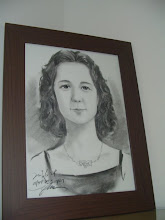Katja Francesca Cantone and Natascha Muller
MacSwan (1999,2000) postulated that the grammars of each language in a bilingual mind are differentiated.
The authors examined the speech of bilingual German and Italian children from ages 1-5. In this paper, the children's DPs (determiner phrases?) were examined, particularly when the children used a noun from one language in an utterance that was primarily in the other language. Genders were sometimes switched along with the noun. The authors propose that this means that "gender is an abstract lexical feature of nouns which is stored in the lexicon and thus reject the view that gender is a functional head in syntax."
MacSwan (1999, 2000) argued that bilinguals have 2 seperate lexicons but "one and the same Computational System"
"it is not the noun endings -o and -a which carry gender"
They say that in one phase of growth, bilingual children mix up gendres between the two semi-autonomous systems.
Tuesday, June 23, 2009
Un nase or una nase? What gender marking within switched DPs reveals about the architecture of the bilingual language faculty
Labels:
bilingualism,
cantone and muller,
children,
gender,
german,
italian,
neurolinguistics,
nouns
Subscribe to:
Post Comments (Atom)

No comments:
Post a Comment